Even without Titans, Apex Legends is a kick-ass hero shooter
Squad play, hero abilities, and great FPS gunplay give Respawn's new F2P battle royale a strong start.
Middle mouse click is never the coolest button in a videogame. In a shooter that's usually left-click, which makes bullets happen. It's what we're here for. In other games maybe it's space to jump, or V for an elaborate melee kill. It could be R for a sweet reload animation. But middle mouse? That's never the star of the show. Except in Apex Legends, because here the middle mouse button is the ping button, and Apex Legends' ping system is honestly incredible. I've never seen a ping system this good. Hell, I've never seen a ping system good enough to make me talk about ping systems. But it's Apex Legends' cleverest innovation and key to the game working at all, because it's a battle royale entirely built around squad play.
After a leaky weekend, Respawn has officially revealed, and launched, Apex Legends, a free-to-play battle royale shooter set in the Titanfall universe. We played Apex last week—read on for our thoughts, and find Apex on Origin.
No solos, no duos: Nothing but squads of three, picked from a pool of unique Overwatch-esque heroes (eight at launch, with more to come) with distinct abilities. This is the game Respawn's Titanfall 2 team has been working on for the past two years, merging what they see as the best elements of hero shooters with the hottest genre around. Look at Apex Legends cynically, and it seems designed by committee: The hotness of BR, the popularity of hero characters, and a heaping helping of skins, emotes, and loot to unlock (check out our detailed breakdown here). But it's the little touches that set it apart, like a fast slide move brought over from Titanfall, a subtly brilliant ping system, and how deeply squad composition affects how you play.
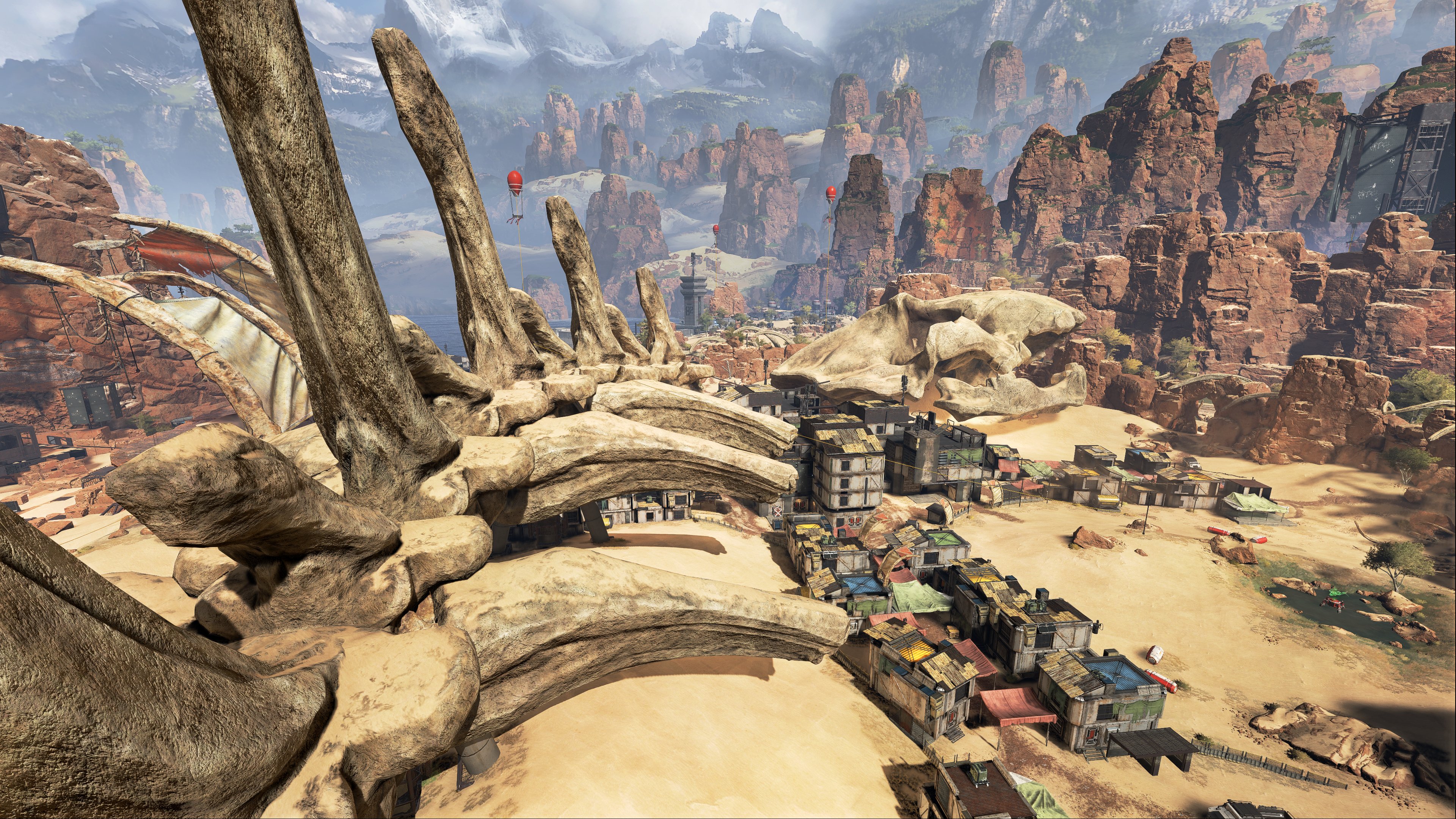
Scroll through for more shots of Apex Legends' varied sci-fi map.
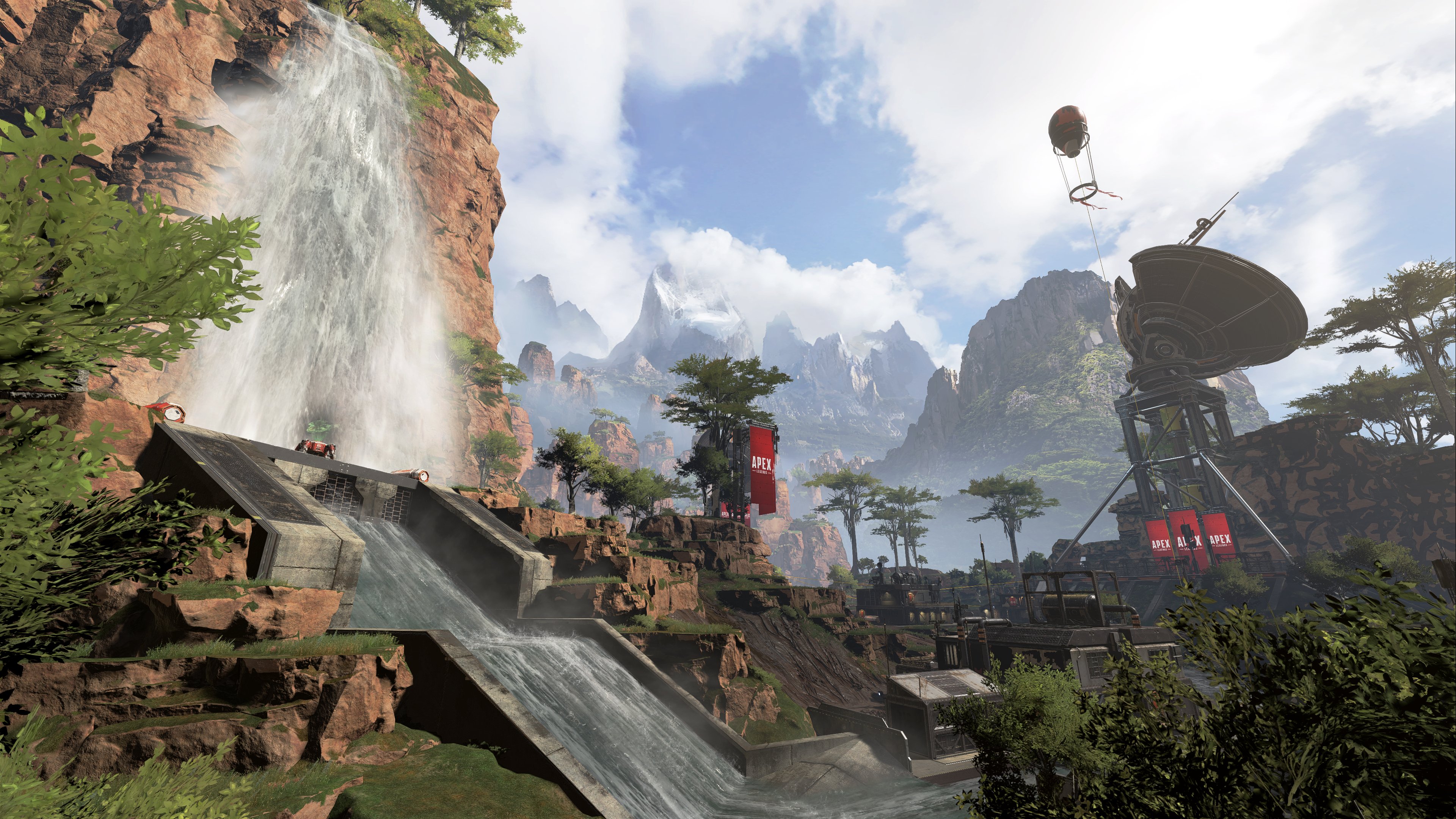
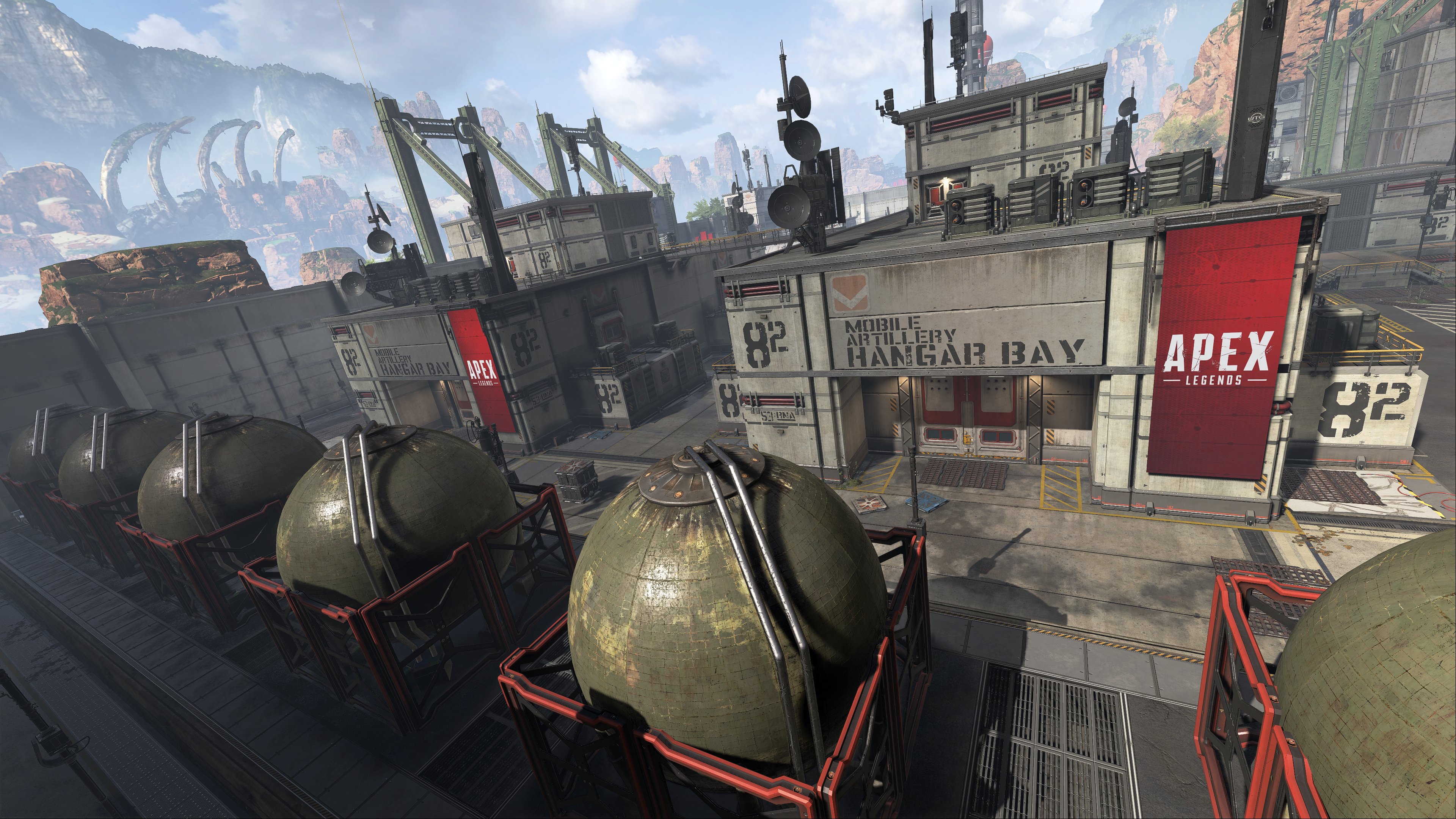
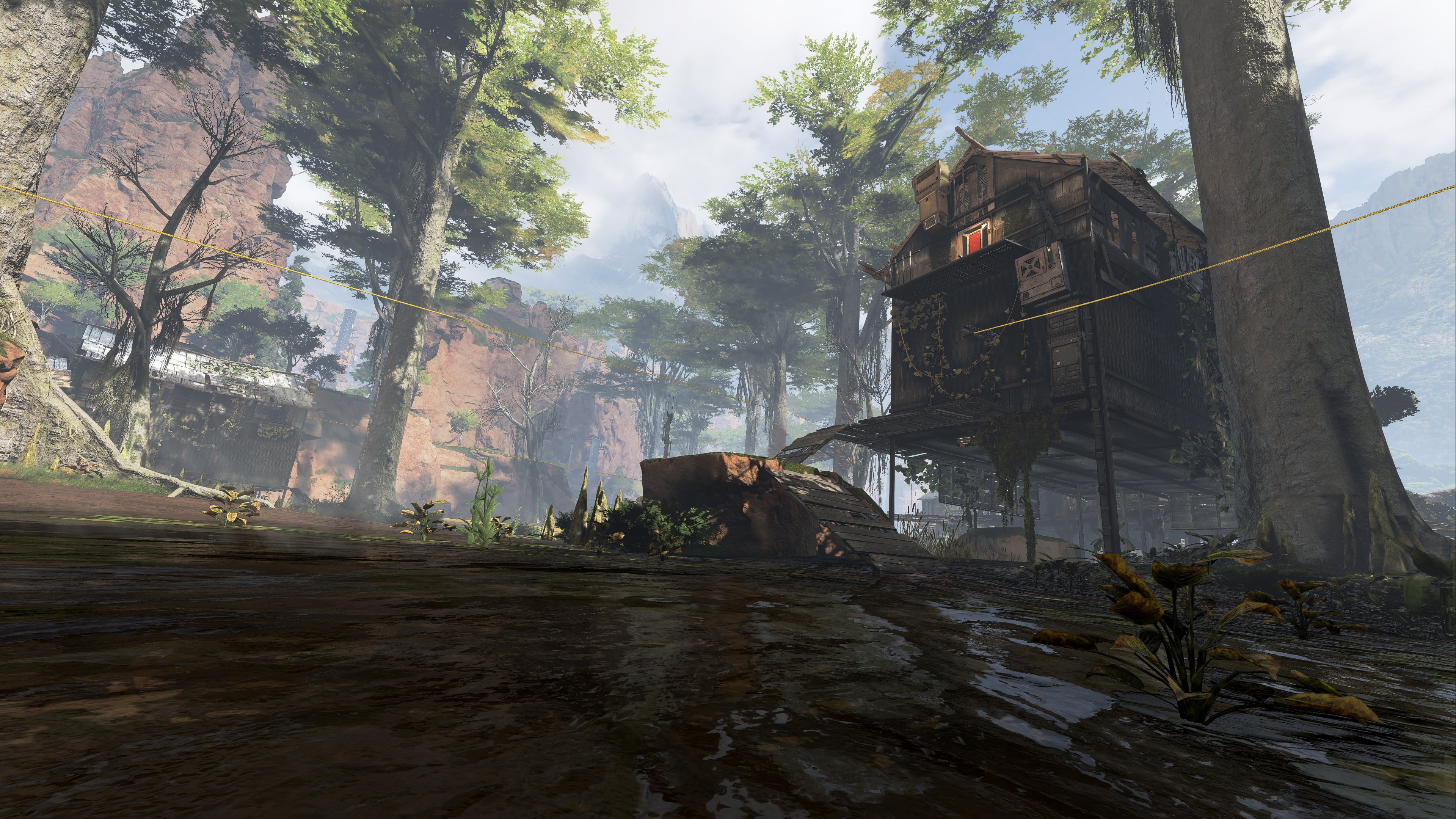

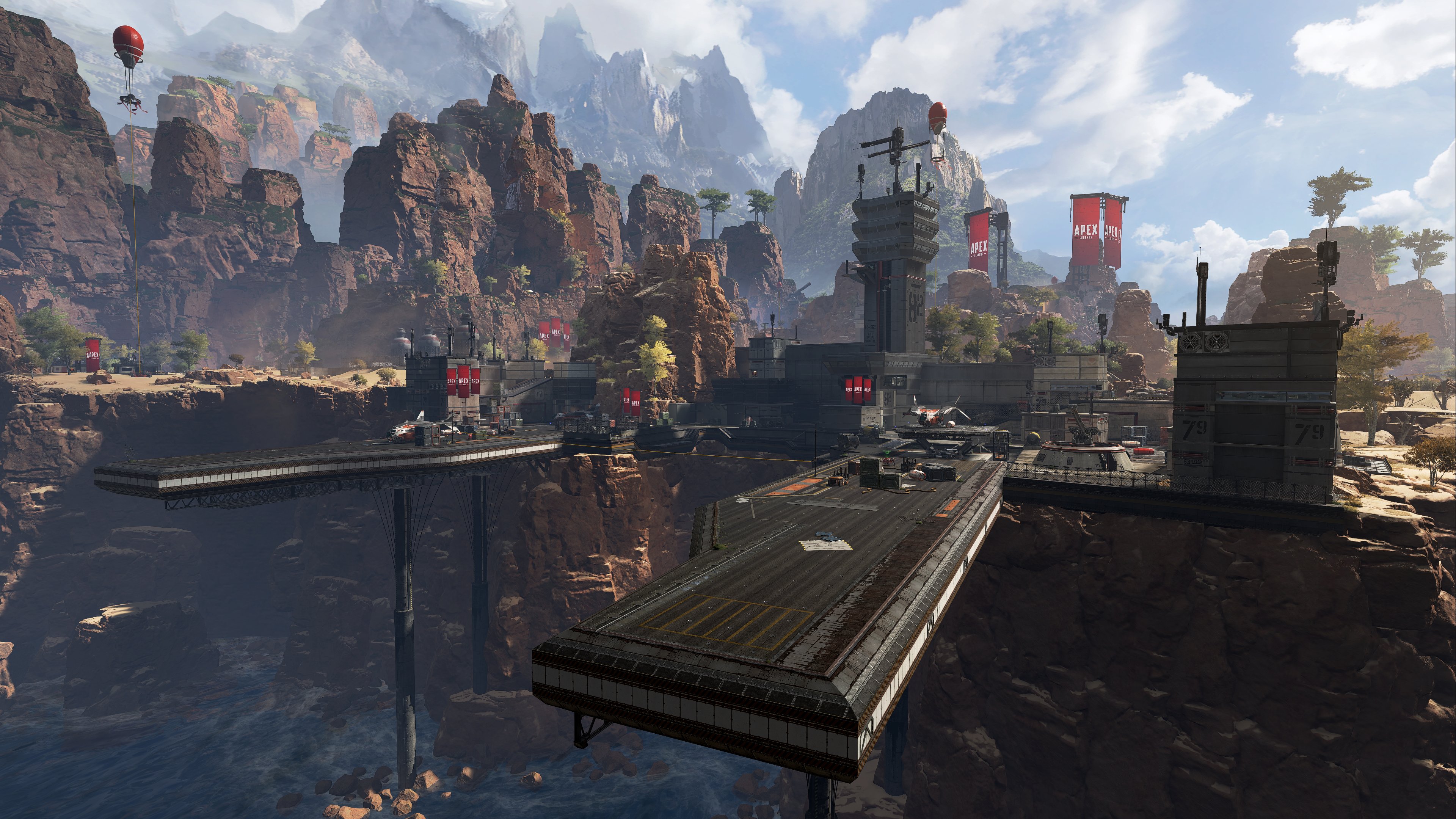

Squad Royale
At the basic level, this is mostly battle royale as you know it, made by an experienced FPS team. It's free to play. Each round 60 players drop from a ship onto a large map, gradually converging on a shrinking circle of safe space until there's only one team left alive. Matches will last 25 minutes or so, unless you die sooner. Which I did, a lot, in the six hours or so I got to play before launch (EA provided travel and accommodations to an Apex Legends preview event in LA last week).
Apex Legends is set in the Titanfall universe, but it definitely isn't a Titanfall sequel. Fans will spot a few nods to those games and a lot of familiar weapons, but it's missing some of the wilder, more fun guns from the Titanfall arsenal I'd hoped to find. It's also missing Titanfall's wild mobility, like double jumping and wall running, though you can still slide down slopes and easily mantle up walls, so you're still fairly agile. There are, sadly, no titans (or any vehicles at all), though I did walk through the giant skeletal ribcage of a very large beast as I made my way across Apex Legends' map, so there's that.
Speaking of the map: It's cool. I mean, really cool. It's a sci-fi smorgasbord that probably makes less than zero logical sense, because in the span of a few minutes you can walk past a waterfall and lush riverside, a desert shantytown, a giant alien skeleton, and a military facility. The variety makes each location memorable, and the game helpfully pops up the name and loot quality of each zone as you enter it. It's a nice middle ground between PUBG's military realness and Fortnite's full-on cartoon wonderland.
The map feels a bit like Titanfall run wild, freed from the constraints of being Call of Duty With Cool Robots. The gunplay still feels very Titanfall, with some added depth in a new ballistics system that requires you to lead shots or compensate for gravity when fighting over large distances. My favorite is the Pathfinder shotgun, a bulky bastard that roars when you shoot it and can download even a shielded enemy in a couple body shots. I'm too nervous under pressure to be a good sniper, but I did land a few hits with the new Triple Take, a super powerful rifle with an extra barrel added onto Titanfall 2's already ludicrous Double Take.
You can tell Respawn is a studio that knows its shooting when the sound effect for taking down an enemy's shield, a sort of electrical shriek, is as deeply satisfying as landing a perfect headshot.
The biggest gaming news, reviews and hardware deals
Keep up to date with the most important stories and the best deals, as picked by the PC Gamer team.
In one match, my squad's Wraith created a portal to take us into the ehe encroaching danger zone to grab some great guns off the bodies of dead enemies
The guns generally feel punchy and fun to fire, but for a sci-fi game they're overall pretty ordinary: a lot of assault rifles and machine pistols and so on. Their relative blandness really highlights the characters and their unique abilities (which you can read about in detail here), which will really affect how you fit into a squad and how you play, match-to-match. I'll admit I was skeptical at first, and figured the limited character roster would grow tiring almost immediately. With 60 players in every match, you're going to be running into the same characters over and over again. But in practice that didn't bother me, and learning how to properly use a character's abilities gave me a long-term goal to shoot for.
For example, I spent the most time playing as Lifeline, a sassy medic who can deploy a healing drone as her primary ability. Each character has a passive ability, an active ability on Q that suits their playstyle, and an ultimate that takes longer to charge up but is obviously more powerful (best as I can tell, ults are on a flat timer, unaffected by getting kills). Lifeline's passive lets her revive downed squaddies more quickly, and deploys a defensive shield to keep you safe while doing so. It's clutch in the heat of battle, when a few seconds of safety while reviving someone can make the difference between a wipe and a battle won. Lifeline's ultimate calls in a care package from the sky, which can outfit your team with armor or weapon upgrades.
I'd say I always want a Lifeline on my team, but the roster is balanced well enough that there are benefits to plenty of squad make-ups. Bangalore's smoke grenade launcher provides simple but super effective cover. Caustic's gas bombs can lock down a whole team.
Wraith, whose ult creates a portal between two points on the map, is incredible for escaping a fight or outflanking opponents. In one match, my squad's Wraith used the portal to take us into the path of the encroaching danger zone to grab some great guns off the bodies of dead enemies, and we jumped back through to safety just as the damaging field closed in on us. It was a thrilling moment.
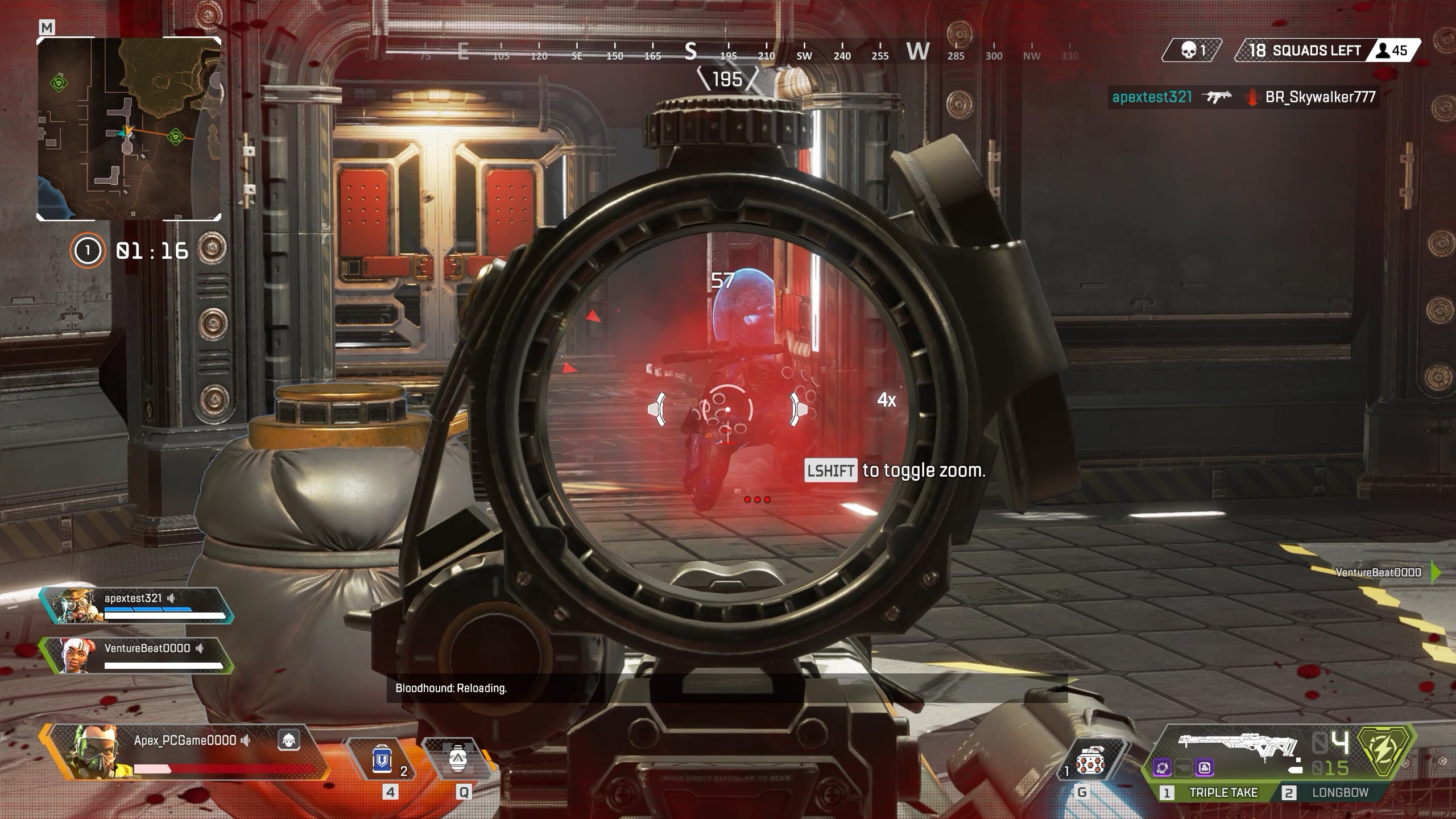
I had a lot of thrilling moments in Apex Legends, mostly around reviving and respawning squadmates. Death isn't necessarily the end in this game: even if you get killed, your squadmates can pick up your ID tags within a short window and bring you back at respawn points scattered about the map, as you spectate and bite your nails. It's a feature you wouldn't see in most battle royales, but it makes total sense in a squad-focused game, and adds great tension to every fight. You can be dead but still rooting on a friend. You could be alive and wonder if your squadmate's killer is camping their body, waiting for you to come claim their ID. You can make it to a respawn point and stand there activating it, totally exposed, praying you don't get shot in the back.
No matter what you're doing, the ping system is just such a great tool for communication. In some cases it's better than voice chat: you can highlight a specific object, like a door or a gun, and tap middle mouse to make your character say something about it. They'll call out the name of a gun you might not know. You can double-tap to signal an enemy's nearby and that'll show up red for your teammates. After someone pings an item, if you pick it up, a prompt will pop up on your screen to thank them for pointing it out. In the world of horrors that is online gaming, it's so pleasant (and, honestly, weird) to have a built-in courtesy button. Saying thank you: Somehow, just as thrilling as shooting a guy.
Room to grow
I also had plenty of dull moments. Apex Legends has the same fits and starts as any battle royale, where you're spending five or even ten minutes wandering the map without spying another player, then unceremoniously dead after a 10 second encounter. In those empty stretches it tries to keep you busy with loot to pick through in every building you come across, but a lot of this feels like busywork to me. There are frag grenades, fire grenades and sci-fi shurikens that I'll grab indiscriminately, and healing items that are important for staying alive.
But mostly there are so many scattered add-ons for your guns, like scopes and barrel stabilizers, and hunting for that stuff feels really fiddly. It's not obvious how much of an impact a basic attachment has vs. a purple rarity one, for example. How stable does my barrel need to be? Why do I need an add-on for a certain gun to switch it from single-shot to semi-auto? Why did this one item go into my inventory instead of onto my gun? Oh, because it's for a different rifle than the one I have.
Maybe exploration would be too boring without loot, but I rarely felt like I was making meaningful or interesting choices with what upgrades I picked up.
This stuff honestly seems like it's there just to give you something to pick up, or because other Battle Royale games have done it this way, and not because they really enrich the gunplay. Maybe exploration would be too boring without loot, but I rarely felt like I was making meaningful or interesting choices with what upgrades I picked up. I was just going through the motions of hoovering up parts that fit on my gun and then moving onto the next loot pile.
Loot is currently Apex Legends' biggest opportunity for improvement, I think—it's not horrible, just uninteresting, and something Respawn can spice up in future updates. Respawn hasn't been specific about its post-launch plans, other than saying they're committed to treating Legends as a true live service game, with seasons, new characters, and more to come after launch.
Likewise, the loot packs and emotes and cosmetics feel derivative of every other "live service" game out there right now. Maybe that's for the simple reason that this stuff works, and hey, the game's free—it's hard to complain about that, when Respawn has been clear that everything you buy or get from a loot pack will be purely for aesthetics. It's just something we've seen many times before, and I sighed a bit when I first looked at a character's unlock screen and saw the same tiers of rare and epic and legendary skins and voice lines and emotes exactly like Overwatch and so many others. You can read more about how all the microtransactions work here.
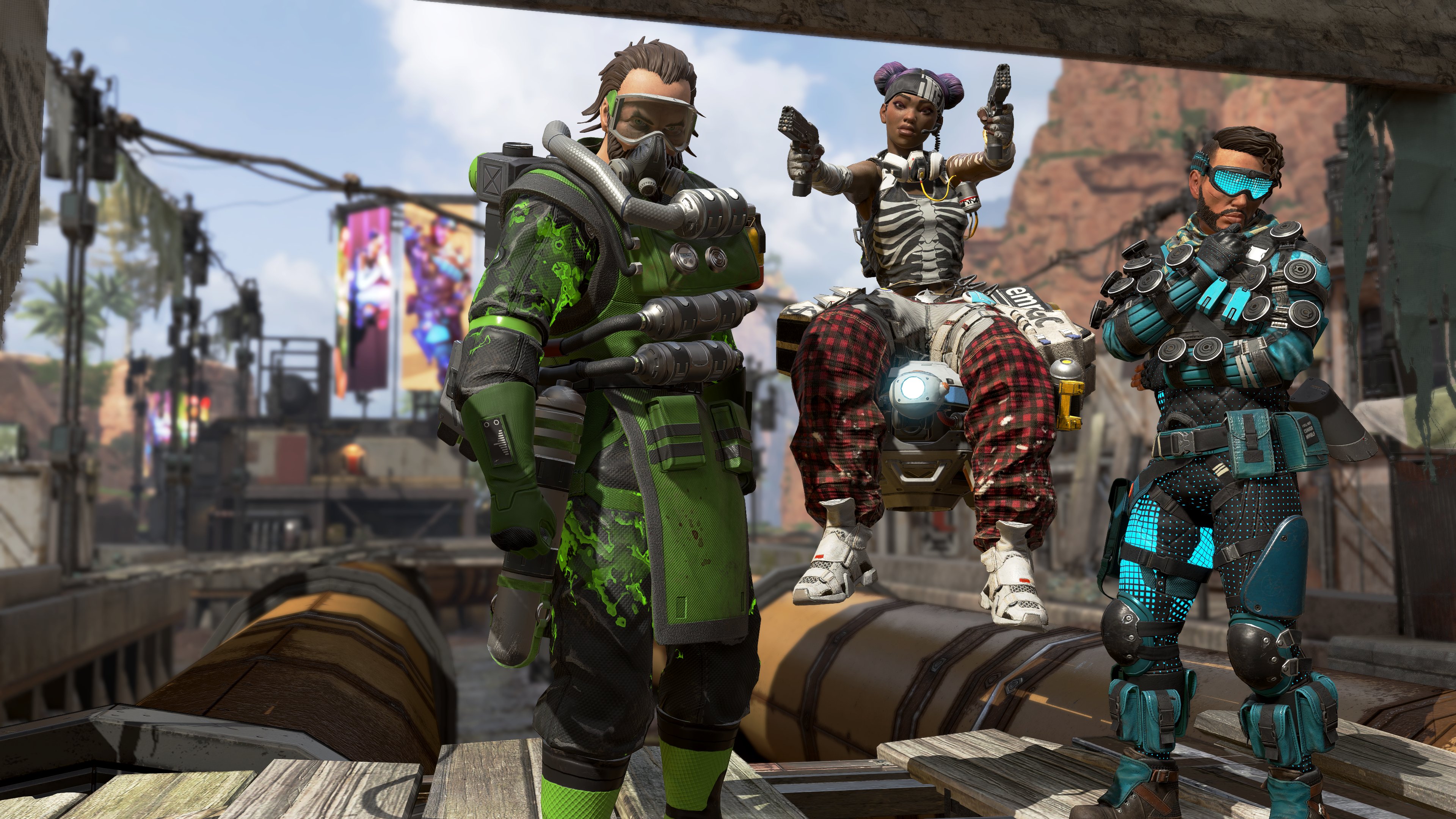
If rote microtransactions are the price to pay for Apex Legends' continued existence, it's not a bad bargain. It definitely needs an expanded roster of characters, but the eight it's launching with are deep enough to carry it for now. From my time with the game, its weakest elements are common to all battle royale games: Messy loot and long stretches of inactivity that can be followed by a quick death and a game over screen.
The setting is cool, the map's cooler, and no other battle royale has first-person shooting this good or as deep a focus on team play. It's all good enough that I almost don't miss the wall running.

Wes has been covering games and hardware for more than 10 years, first at tech sites like The Wirecutter and Tested before joining the PC Gamer team in 2014. Wes plays a little bit of everything, but he'll always jump at the chance to cover emulation and Japanese games.
When he's not obsessively optimizing and re-optimizing a tangle of conveyor belts in Satisfactory (it's really becoming a problem), he's probably playing a 20-year-old Final Fantasy or some opaque ASCII roguelike. With a focus on writing and editing features, he seeks out personal stories and in-depth histories from the corners of PC gaming and its niche communities. 50% pizza by volume (deep dish, to be specific).

